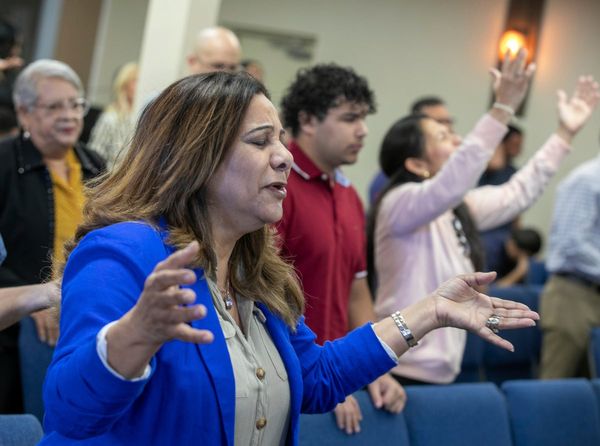A 'maverick' MP, a former foreign minister who dreams of eradicating nuclear weapons and, for the first time, two female candidates have lined up to become Japan's new leader.
Prime Minister Yoshihide Suga announced his resignation after just 12 months in office following poor polling over his government's handling of the COVID-19 crisis, including a sluggish vaccination rollout.
Now, four candidates have put up their hand to replace him as the president of the ruling Liberal Democratic Party (LDP) and in turn, become the next prime minister.
Here's a look at how the voting process works and who is in the running to be the next leader.
How does voting go down?
Such is the dominance of the LDP in Japanese politics that winning the party presidency is effectively enough to secure the prime ministership.
The party has only been out of office twice since it was founded in 1955 and currently holds a healthy majority in the House of Representatives.
Party presidents can serve a maximum of three three-year terms, meaning former prime minister Shinzo Abe would have been forced to step down this month anyway had he not retired last year.
Campaigning officially started on September 17 and the official vote will be held on September 29.
The vote will be decided by 766 votes, split equally between the LDP's sitting politicians and grassroot members.
If one candidate does not secure more than 50 per cent of the vote, there will be a run-off.
This time, the party's powerful factions have given MPs a free vote, rather dictating who its members should get behind.
The winner will then take Japan to a general election, which must be held on or before November 28.
Who are the candidates?
Taro Kono
Widely described as a political "maverick", Taro Kono has been top of the polling in recent polls of voters and business leaders.
He is the minister in charge of Japan's COVID-19 vaccine rollout and has previously worked as defence and foreign minister.
Hailing from a prominent political family, Kono quit university in Japan for the United States at the age of 18 and spent some time working in US politics.
Kono is active on Twitter in both English and Japanese, where he has 2.4 million followers, and is known for posting pictures of himself in interviews, sharing images of his food and interacting with his followers.
The maverick tag comes from his willingness to promote reform-minded policies, including ending nuclear power (a stance he has recently backed away from) and allowing women to ascend to the Japanese imperial throne.
Mr Kono has the backing of Suga and popular MPs Shigeru Ishiba and Shinjiro Koizumi.
Interesting fact: Kono served in the Japanese Diet at the same time as his father, Yohei, a former foreign minister, LDP president and the longest-serving speaker in the House of Representatives.
Sanae Takaichi
Even if she does not win, Sanae Takaichi's candidacy is remarkable in that it is just the second time a woman has entered the race to be leader.
Takaichi is closely aligned to former PM Abe, having served most recently as his minister for internal affairs and communications.
She is on the right-wing of the party and her name is never afar way from the words "staunch conservative" and "nationalist".
Her policies include a strong opposition to Japan's apologies for its wartime aggression and regular visits to the Yasukuni Shrine in Tokyo, a source of tension with China and South Korea given it enshrines over 1,000 war criminals among Japan's war dead.
Takaichi was a leading figure against the push to change laws that dictate married couples must share the same surname.
While she has polled well below Kono, the backing of the still-powerful Abe could work in her favour.
Interesting fact: Takaichi is an avowed fan of former British prime minister Margaret Thatcher and met her political idol before her death in 2013.
Fumio Kishida
Fumio Kishida was the first candidate to throw his hat in the ring, announcing his intention to challenge for the LDP leadership back on August 26 and triggering the events that eventually saw Suga stand down.
It's the second time in a year he has run for the leadership, having finished second behind Suga in the 2020 party presidential vote to replace Abe.
The 64-year-old from Hiroshima, whose father and grandfather were MPs, made his name as Japan's longest-serving foreign minister between 2012 and 2017.
It was in that role that he voiced a vision for a world without nuclear weapons and played an important role in Barack Obama's 2016 visit to Hiroshima, the first sitting US president to do so.
Profiles have cast the softly-spoken MP, whose father and grandfather also served in the House of Representatives, as a "moderate liberal".
He leads his own influential 47-member faction and has polled behind Kono, but ahead of Takaichi and Noda.
Interesting fact: Profiles of Kishida mention his love of a drink. As foreign minister, he reportedly challenged his Russian counterpart Sergei Lavrov to a contest of who could drink the most sake.
Seiko Noda
Noda was a very late entrant to the race, having only announced her candidacy the day before the start of the official campaign.
Her entry makes it the first time two women have stood for election to be party president.
The 61-year-old has in the past been hailed as Japan's most likely first female PM.
She is a former minister for gender equality and women's empowerment and has spoken in support for same-sex marriage and changing laws that require married couples to have the same surname, which predominantly sees women forced to change their names.
In announcing her candidature, she said she wanted to create a Japanese society where "women, children, the elderly and the disabled can live comfortably".
Interesting fact: Noda gave birth to a son in 2011 at the age of 50. She used an American egg donor after years of trying other fertility treatments. She carried the baby herself as surrogacy is not widely accepted in Japan.







